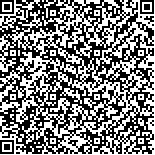| 引用本文: |
谢婷,李杰,胡金辉,杨争.基于数据挖掘和网络药理学探讨中医药治疗乳腺癌的用药规律及作用机制[J].湖南中医药大学学报,2022,42(1):144-152[点击复制] |
|
| |
|
|
| 本文已被:浏览 3185次 下载 1021次 |
| 基于数据挖掘和网络药理学探讨中医药治疗乳腺癌的用药规律及作用机制 |
| 谢婷,李杰,胡金辉,杨争 |
| (湖南中医药大学, 湖南 长沙 410208;湖南中医药大学第一附属医院, 湖南 长沙 410007) |
| 摘要: |
| 目的 探讨中医药防治乳腺癌的用药规律及作用机制。方法 以《肿瘤良方大全》《肿瘤方剂大辞典》《中医肿瘤学》《乳腺癌与乳腺增生》《药典临床用药中药成方制剂》文献为数据来源,运用中医传承辅助平台(V2.5)挖掘中药治疗乳腺癌的用药规律及核心处方,并利用网络药理学方法分析其核心处方的潜在作用机制。结果 最终纳入297首中药方剂,挖掘出10组核心药物配伍及5首新处方,高频药物有茯苓、黄芪、柴胡、白术、甘草、白芍、夏枯草、当归、郁金、白花蛇舌草等,药物归经以肝经和脾经为主,性味以甘温居多,以“柴胡-郁金-夏枯草-炒枳壳-橘核”为首的核心处方主要通过调控Rap1、Hippo、MAPK、Toll样受体等信号通路抑制肿瘤细胞增殖、侵袭和迁移,发挥抗肿瘤作用。结论 乳腺癌的中医药治疗以调节肝脾为主,辨其标本虚实,重用甘温以补虚,解毒散结以治标。其核心处方通过多通路、多成分、多靶点来调控乳腺癌的发生发展。 |
| 关键词: 乳腺癌 数据挖掘 中医传承辅助平台 网络药理学 用药规律 作用机制 |
| DOI:10.3969/j.issn.1674-070X.2022.01.027 |
| 投稿时间:2021-06-25 |
| 基金项目:国家自然科学基金项目(81673963);湖南省自然科学基金项目(2020JJ4464);湖南省教育厅科研计划重点项目(20A373);湖南省卫计委科研计划重点项目(20200751);湖南省科技厅科研计划重点项目(2021ZK4108);湖南中医药大学校级科研重点项目(2020XJJJ002)。 |
|
| Drug rule and mechanism of Chinese medicine in treating breast cancer based on data mining and network pharmacology |
| XIE Ting,LI Jie,HU Jinhui,YANG Zheng |
| (Hunan University of Chinese Medicine, Changsha, Hunan 410208, China;The First Affiliated Hospital of Hunan University of Chinese Medicine, Changsha, Hunan 410007, China) |
| Abstract: |
| Objective To explore the drug rule and potential mechanism of Chinese medicine in the prevention and treatment of breast cancer (BC). Methods The literature of Tumor Prescriptions, Tumor Prescriptions Dictionary, Traditional Chinese Medicine Oncology, Breast Cancer and Breast Hyperplasia and Prescription Preparation of Traditional Chinese Medicine for Clinical Use in Pharmacopoeia were used as data sources, the traditional Chinese medicine inheritance assistance platform (V2.5) was used to explore the medication rules and core prescriptions of traditional Chinese medicine in BC treatment, and the potential mechanism of the core prescriptions was analyzed by network pharmacology method. Results A total of 297 prescriptions were screened out, involving 10 core drug combinations and 5 new prescriptions. The high frequency drugs included Fuling (Poria), Huangqi (Astragali Radix), Chaihu (Bupleuri Radix), Baizhu (Atractylodis Macrocephalae Rhizoma), Gancao (Glycyrrhizae Radix Et Rhizoma), Baishao (Paeoniae Radix Alba), Xiakucao (Prunellae Spica), Danggui (Angelicae Sinensis Radix), Yujin (Curcumae Radix), Baihuasheshecao (Hedyotis Diffusa), etc. The main channels of drugs were liver meridian and spleen meridian, and their drug property and taste were sweet and warm. The core prescriptions led by "Chaihu (Bupleuri Radix)-Yujin (Curcumae Radix)-Xiakucao (Prunellae Spica)-Chaozhiqiao (Aurantii Fructus)-Juhe (Citri Reticulatae Semen)" mainly inhibit the proliferation, invasion and migration of tumor cells by regulating Rap1, Hippo, MAPK, Toll-like receptor and other signaling pathways, thus playing an anti-tumor role. Conclusion The treatment of BC with traditional Chinese medicine is mainly based on regulating liver and kidney, distinguishing the deficiency and excess of the root cause and symptoms, using sweet and warm to to supplement the deficiency, detoxifying and dispersing the knot to treat symptoms. Its core prescription regulates the occurrence and development of BC through multi-pathway, multi-component and multi-target. |
| Key words: breast cancer data mining traditional Chinese medicine inheritance assistance platform network pharmacology medication rule mechanism of action |
|

二维码(扫一下试试看!) |
|
|
|
|




